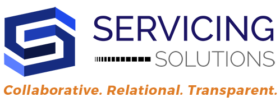Welcome back to our ” Cultivating Call Center Excellence” series. In this fifth installment, we’re focusing on the transition from customer service to collections, with added emphasis on key performance indicators (KPIs) and negotiation strategies. We’ll provide clear explanations and actionable insights to ensure you’re well-equipped for this new role.
Understanding the Collections Role: A New Perspective
Transitioning to collections involves a shift in focus from purely assisting customers to also recovering debts and assisting customers to bring their accounts current. Here’s what you need to know:
Mindset Shift
Action step: Reflect on the differences between customer service and collections. Embrace the mindset of problem-solving and assertiveness required in collections.
Ethical Considerations
Action step: Familiarize yourself with your organization’s code of conduct and ethical guidelines. Commit to adhering to these principles in all interactions.
Exercise: Write down three ways in which the collections role differs from customer service. Discuss these differences with a mentor or supervisor to gain deeper insights and understanding.
Key Performance Indicators (KPIs) for Collections
Understanding and tracking KPIs is crucial for success in collections. Here are some important metrics to focus on:
Collection Rate
Definition: The percentage of outstanding debt that has been successfully collected.
Average Days to Collect
Definition: The average number of days it takes to collect on a debt from the time it becomes overdue.
Right Party Contact Rate
Definition: The percentage of successful contacts made with the actual debtor.
Promise to Pay Rate
Definition: The percentage of debtors who commit to a payment plan or settlement.
Promise Kept Rate
Definition: The percentage of debtors who follow through on their payment promises.
Practice technique: Create a personal dashboard to track these KPIs daily. Discuss your progress with your supervisor regularly to ensure you are meeting targets and improving over time.
Effective Negotiation: WIFMs (What’s In It For Me) for Customers
When negotiating with customers, it’s crucial to highlight the benefits of resolving their debt. Here are some WIFMs you can offer:
Credit Score Improvement
Explanation: Resolving debt can positively impact the customer’s credit score, making it easier for them to obtain loans and credit in the future.
Reduced Stress
Explanation: Clearing debt reduces financial stress and allows the customer to focus on other important aspects of their life.
Flexible Payment Options
Explanation: Offering flexible payment plans makes it easier for customers to manage their debt repayments.
Waived Fees or Interest
Explanation: Offering to waive certain fees or interest can incentivize customers to settle their debts more quickly.
Role-play exercise: Practice negotiating with a colleague, focusing on presenting these WIFMs effectively. Seek feedback on your approach to refine your negotiation skills.
Essential Collections Skills: Building Your Toolkit
To excel in collections, you’ll need to develop specific skills:
Negotiation Skills
Action step: Participate in a negotiation workshop or training session to enhance your ability to reach mutually beneficial agreements.
Resilience and Persistence
Action step: Set personal goals for handling rejections and setbacks. Practice positive self-talk and stress management techniques.
Empathy and Patience
Action step: Engage in active listening exercises to improve your ability to understand and empathize with customers’ situations.
Time Management
Action step: Create a daily schedule to prioritize tasks and manage your time effectively. Use productivity tools to stay organized.
Daily challenge: Focus on improving one skill each day. Reflect on your progress and adjust your approach as needed.
Leader’s Playbook: Supporting the Transition to Collections
For managers and team leaders:
Provide Comprehensive Training
Action step: Develop a training program that covers essential collections skills, KPIs, and ethical considerations.
Implement KPI Tracking Systems
Action step: Set up a system to monitor and analyze KPIs regularly. Use this data to guide performance improvements.
Collection Development Ladder
In developing your collections team, it is essential to focus on each rung of the development ladder, ensuring agents reach satisfactory levels before moving to the next rung. Here is a detailed breakdown:
First Rung: Calls
Although calls are the first rung, you should never coach a representative merely to make more calls. Instead, identify the underlying causes of low call volumes such as distractions, navigation or system issues, or a lack of will. The best way to identify these issues is through side-by-side coaching and observations.
Second Rung: Contacts
The next rung is contacts. Evaluate this through side-by-side observations, account reviews, and coaching sessions. Identify what prevents contact—if it’s a lack of call volume, go back to the first rung. If not, assess how the agent initiates their calls. Do they engage the person by directly asking to speak with the customer? Are they allowing the phone to ring between 4 to 7 times before ending the call? Ensure they are calling all provided numbers and probing third parties for better contact information without violating the FDCPA. Also, ensure they are calling at different times to identify the best times to reach customers.
Third Rung: Conversion
Conversion is best observed through call monitors or live monitoring. This is the art of collections, focusing on the call model and negotiation skills. Emphasize avoiding early terminations, overcoming objections, and effective negotiation techniques.
Fourth Rung: Promises Kept
This rung is monitored through calls where promises to pay (PTP) were broken. Ensure agents obtain the method, amount, and date of the promise and verify that it aligns with a valid source of funds.
Fifth Rung: Dollars Collected
The final rung focuses on the actual dollars collected. Ensure agents are consistently applying the skills developed in the previous rungs to maximize collections.
By systematically developing your agents through each rung of the ladder, you ensure a comprehensive and effective approach to collections that enhances both individual and team performance.
Regular Performance Reviews
Action step: Conduct frequent performance reviews to provide feedback and support for your team members’ development.
Create a Supportive Environment
Action step: Foster a positive and collaborative team culture where members feel valued and supported.
Recognition and Rewards
Action step: Implement a comprehensive recognition program to reward team members for their hard work and achievements in collections. A well-rounded recognition program can significantly boost morale, motivation, and performance. Here are some strategies to consider:
Long-Term Rewards
- Bonus Programs: Establish a bonus structure based on performance metrics such as the amount of debt collected, adherence to company policies, and overall effectiveness in their role. Bonuses can be awarded Monthly, quarterly or annually.
- Incentive Programs: Create incentive programs that offer tangible rewards such as extra vacation days, gift cards, or other desirable perks for meeting or exceeding set goals. These programs can run over several weeks or months to maintain sustained motivation.
Short-Term Incentives
- Snack Cart: Introduce a snack cart that makes regular rounds in the office, offering snacks and beverages as a quick reward for an hourly or daily contest is an easy way to boost morale. This can be especially effective during busy periods.
- Daily Contests: Organize daily contests that encourage friendly competition among team members. For example, reward the agent with the highest number of successful calls or most PTP’s for the hour or day.
- Weekly Contests: Implement weekly contests with slightly bigger rewards, such as gift cards or a prime parking spot, to maintain ongoing excitement and motivation. These contests could focus on metrics like the highest promise-to-pay rate or the most improved performance.
Combination Approach
Combining long-term and short-term incentives ensures that team members stay motivated both in the short run and over the long haul. The immediate rewards from daily or weekly contests can provide instant gratification, while the promise of significant bonuses or incentives keeps agents focused on their long-term performance goals.
By implementing a varied recognition program, you can create an environment where team members feel valued and appreciated, driving them to achieve higher levels of performance and satisfaction in their roles.
Transitioning to collections requires understanding new metrics, developing negotiation skills, and maintaining a customer-focused approach. Remember to:
- Track and improve your KPIs consistently
- Use WIFMs effectively in negotiations
- Develop essential collections skills
- Stay ethical and compliant in all interactions
In our next blog, we’ll delve deeper into “Mastering Collections Techniques,” building on the foundation we’ve laid here.
Keep practicing these skills, stay focused on your KPIs, and watch as your ability to handle collections cases improves. You’re on your way to becoming a true expert in collections!


